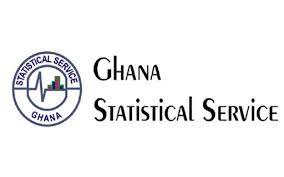Provisional data released by the Ghana Statistical Services (GSS) show economic growth slowed to 3.7 percent in the fourth quarter (Q4) of 2022 compared to 5.6 percent in the same period in 2021.
The provisional real quarterly gross domestic product (GDP) data indicate that non-oil GDP also declined from 6.9 percent in 2021 to 4.3 percent in Q4 2022.
Government revised its growth projection down to 3.7 percent from the 5.8 percent initially forecasted for 2022, as well as 4.3 percent for non-oil growth due to the challenging macroeconomic environment.
Although the economy experienced a slowdown in Q4 2022, some sub-sectors recorded significant growth rates.
The Services sector recorded the highest growth rate of 7.6 percent, followed by the Agriculture sector which grew 3.6 percent, while the industry sector contracted by 1 percent growth rate.
The mining and quarrying, information and communication, public administration, defence and social security, crops, and education sub-sectors were the main drivers of GDP growth in Q4 2022, with information and communication registering an expansion of 20.5 percent.
Meanwhile, public administration, defence and social security were 15.7 percent; mining and quarrying, 13.4 percent; and education, 12.3 percent. Health and social work also grew by 10.5 percent.
On the other hand, seven sub-sectors contracted in Q4 2022.
These include: water supply, sewerage, waste management and remediation activities, -13.4 percent; real estate, -13.4 percent; electricity, -12.8 percent; manufacturing, -9.6 percent; professional, administrative and support service activities, -7.7 percent; construction, -7.1 percent; and fishing, -1.5 percent.
Meanwhile, the Bank of Ghana’s composite Index of Economic Activity (CIEA) for January 2023 indicated a contraction in economic activity by 7.6 percent compared to a growth rate of 4.2 percent in the same period of 2022, a continuation of the contraction by 6.2 percent in November 2022.
The main indicators that weighed down the index during the period were port activity, cement sales, imports and credit to the private sector.
The manufacturing sub-sector contracted further by 0.7 percentage points in Q4 2022 compared to the 1.8 percent contraction in Q3 2022.
There were contractions in the water supply, sewerage, waste management and remediation activities (-17.7 percent); real estate (-11.3 percent) and construction (-4.1 percent).
Despite contraction in the industry sector, some sub-sectors within it recorded growth. The electricity sub-sector, for instance, recorded growth of 2.7 percent – which was higher than the 0.8 percent growth rate recorded in the third quarter of 2022.










